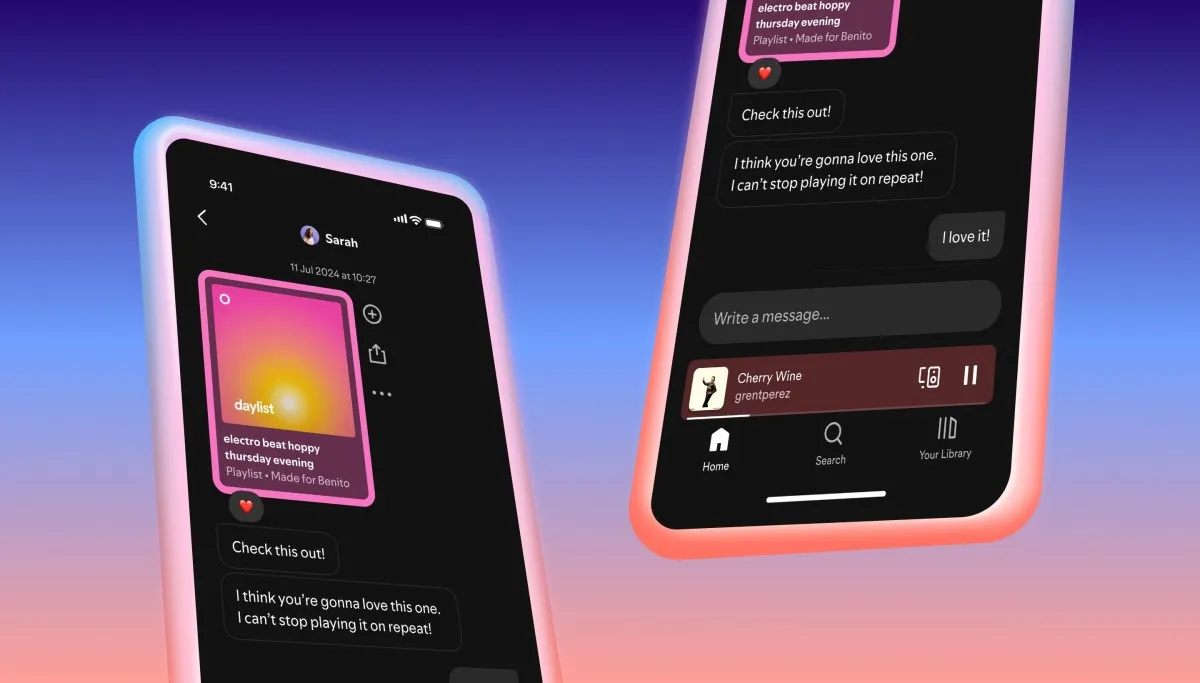
On Tuesday, Spotify unveiled an innovative messaging feature aimed at transforming the platform into a more social app. For years, users have been sharing Spotify links for music and podcasts outside the platform, but this new feature encourages users to engage more deeply within the app itself. The messaging capability not only allows for conversations but also keeps a comprehensive history of shared content, eliminating the need for users to search for songs or podcasts they've discussed.
At its initial launch, Spotify's messaging system is designed for one-on-one interactions. Users can initiate a chat only with those they have previously shared content with. This includes individuals with whom they have created a collaborative playlist or participated in a jam or blend. Additionally, users on a Family or Duo plan can also connect through this feature. To start a conversation, users must send a request, which the recipient must approve.
Moreover, if someone shares a Spotify link on social media platforms such as Instagram, Facebook, WhatsApp, Snapchat, or TikTok, users can tap on the link to approve the chat request. Alternatively, users can invite someone from their contacts by sending a dedicated invite link. Spotify encourages users to continue sharing content outside the app, stating that this messaging feature is intended to be a complementary tool rather than a replacement.
Users can easily access the new messaging feature by tapping on their profile pictures. Conversations are organized under the Messages section, which is conveniently located in the hover bar on the left side of the app. Another engaging aspect of this feature is the ability to react to specific messages using emojis, enhancing the interactive experience.
In terms of security, Spotify has confirmed that messages are encrypted both at rest and in transit. However, it’s important to note that messages do not have end-to-end encryption. The company actively monitors messages to ensure they comply with its guidelines, and users have the option to report any messages they find inappropriate. Spotify will investigate these reports in accordance with its terms of service and platform rules.
During a recent quarterly call, Spotify’s Chief Product and Technology Officer, Gustav Söderström, hinted that the consumer mobile experience would soon become significantly more interactive. The introduction of the messaging feature aligns with this vision. Currently, Spotify is rolling out the messaging feature to both premium and free users aged 16 and older in select markets across Latin and South America, specifically on mobile devices. The company plans to expand this feature to the U.S., Canada, Brazil, the EU, the U.K., Australia, and New Zealand in the upcoming weeks.
Historically, Spotify has included only a limited number of social features, such as following friends and viewing their listening habits. However, recent updates have introduced elements like comments on podcasts and a redesigned video-focused feed. In a previous interview, Spotify's VP of Podcast Product, Maya Prohovnik, hinted that comments could potentially be incorporated into music tracks in the future.
Despite the potential benefits of the new messaging feature, some users have expressed concerns about Spotify's interface becoming increasingly cluttered. My colleague, Amanda Silberling, who transitioned from Spotify to Apple Music, highlighted the overwhelming visual clutter that complicates navigation from the home page to the desired music. While the messaging feature may encourage more content sharing among friends, it could also add to the frustration of users who feel that the app is growing more complex.
Fortunately, Spotify offers users the ability to manage their preferences. Users can navigate to Settings > Privacy and Social to disable the messaging feature if they prefer a simplified experience.